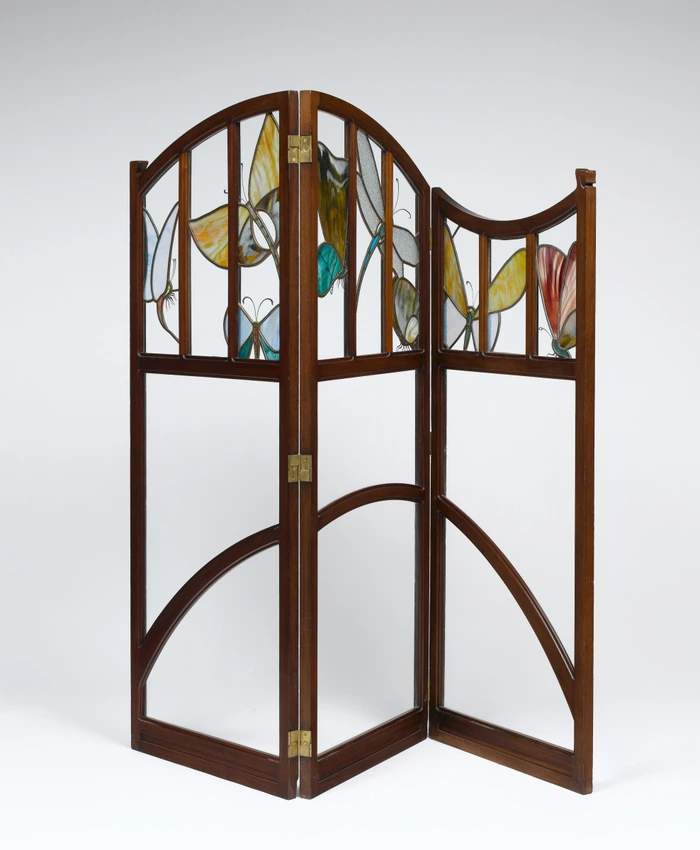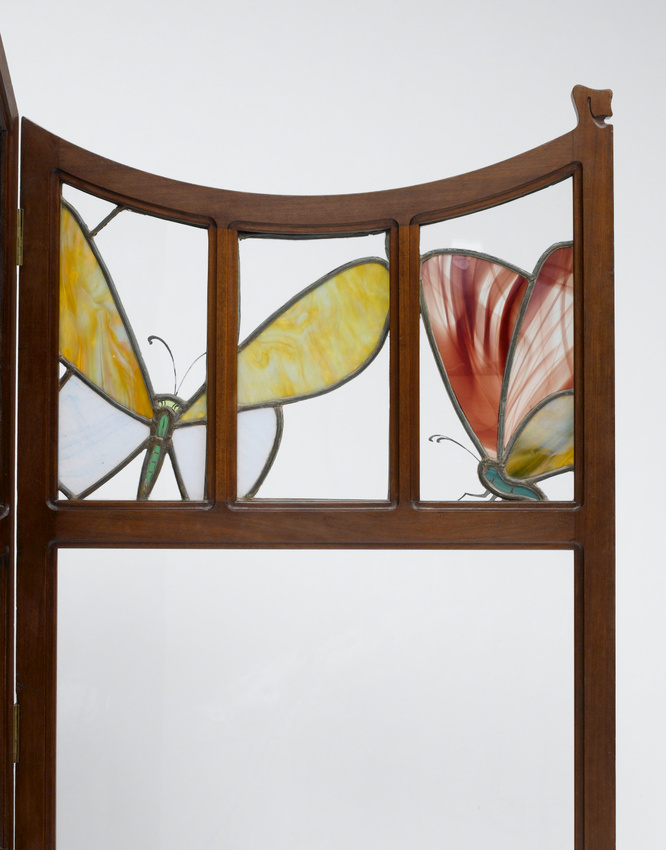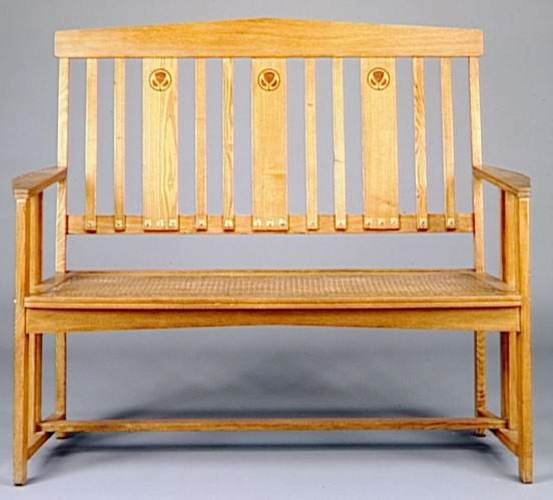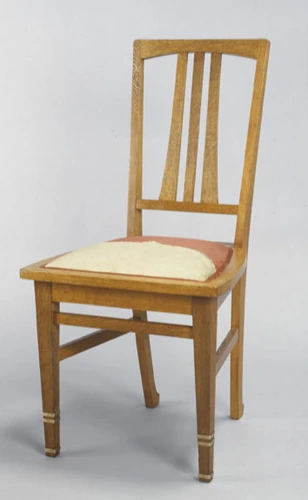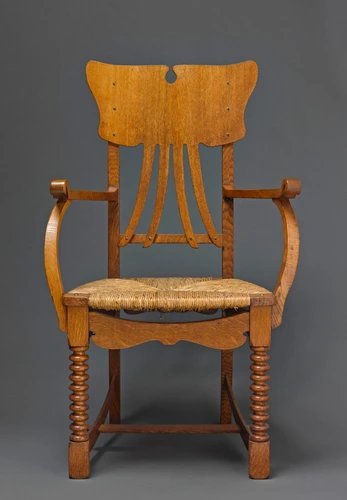Paravent à trois feuilles
In 1899, Gustave Serrurier-Bovy, an interior designer based in Liège, anxious to improve the circulation of his creations, decided to open a shop at number 54, rue de Tocqueville in the XVth arrondissement in Paris. He was supported financially by his French colleague René Dulong, who was to design the famous Pavillon bleu at the 1900 World Fair.
Serrurier adopted the same display techniques for his Paris showroom, named "L'Art dans l'habitation" ("Art in the Home"), as for his shops in Liège and Brussels where potential customers were plunged into spaces furnished like the rooms of a private house.
The bedroom, of which this folding screen is part of the furnishings, has now been entirely reconstructed in the Musée d'Orsay. Customers were probably offered two options to complete the lower part of the screen: either with an upholstery material harmonising with their bed linen and wallpaper or with a plain white glass.
The critic Gustave Soulier drew the public's attention to this object: "One must mention the beautiful folding screen, a genuine piece of art (...) The lower sections of the panels are upholstered in cloth whilst the upper sections are made of leaded glass screens depicting a flight of butterflies and dragonflies: besides the charming manner in which he has drawn the insects, M. Serrurier has skilfully brought out the beauty of the roughcast and iridescent glass, some pieces of which are as marbled as agates and work magnificently well."
